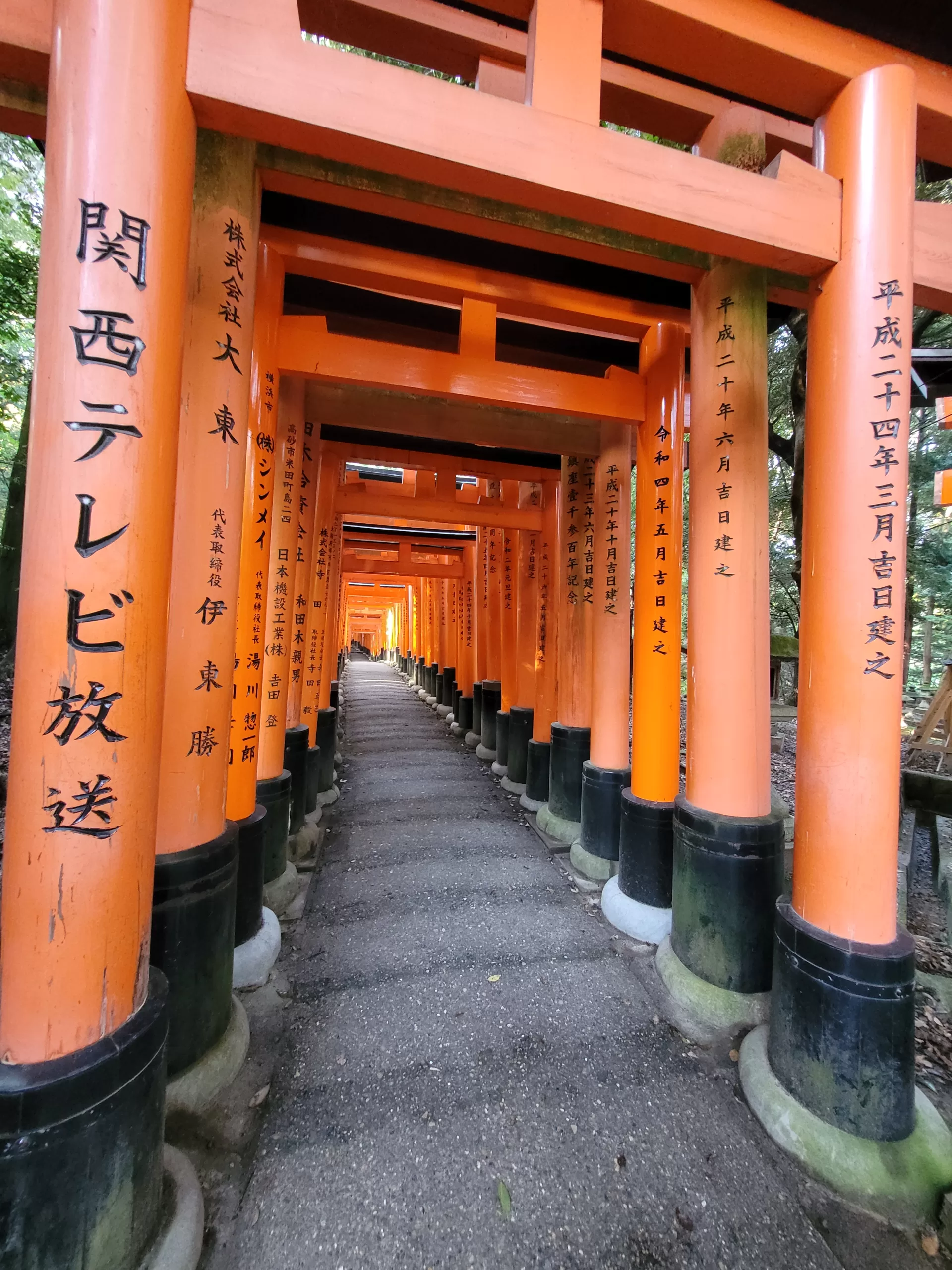Fushimi Inari-Taisha is by far Japan’s most popular shrine, known for its thousands of orange gates and fox statues.
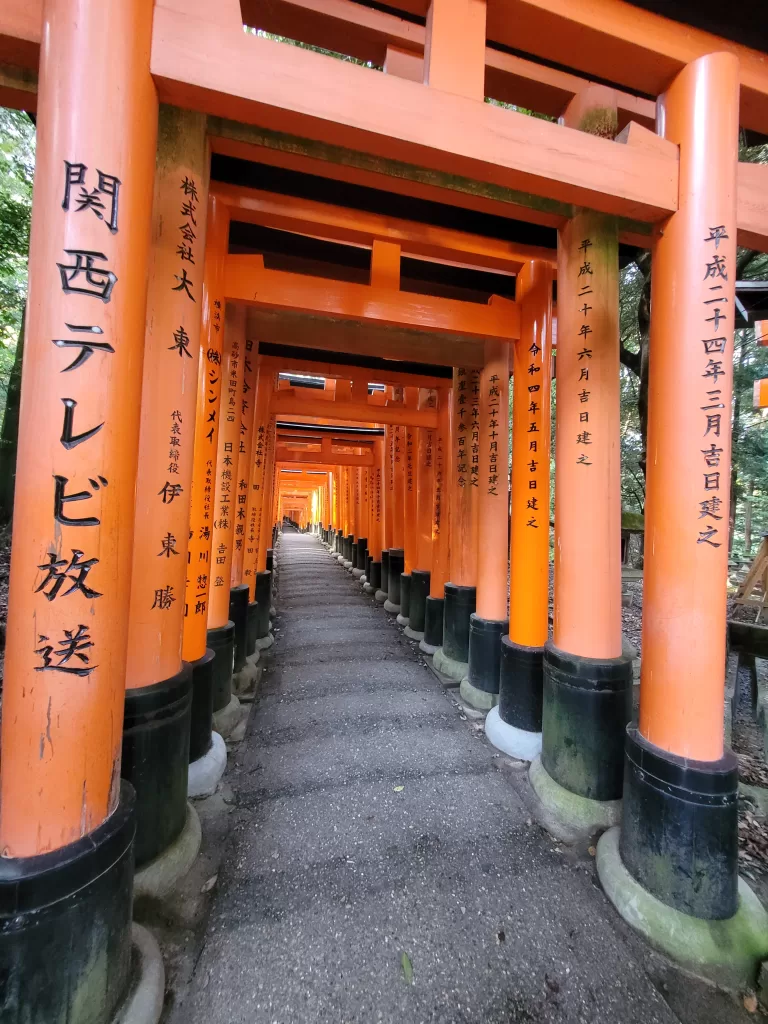
The Fushimi Inari-Taisha shrine was built in 711 to honour Inari, the Shinto god of rice. As it was believed the messengers of Inari were foxes, the shrine pays tribute to these guardians of rice which, in ancient Japan, was associated with wealth.
Arriving at Fushimi Inari station

The moment you arrive at Fushimi Inari station, you’ll feel the whole “fox vibe” right away. From the cool fox decorations on the station signs to the familiar orange-themed pillars that resemble the Fushimi Inari-Taisha shrine, you can be sure you’re at the right place!
The Grand Entrance
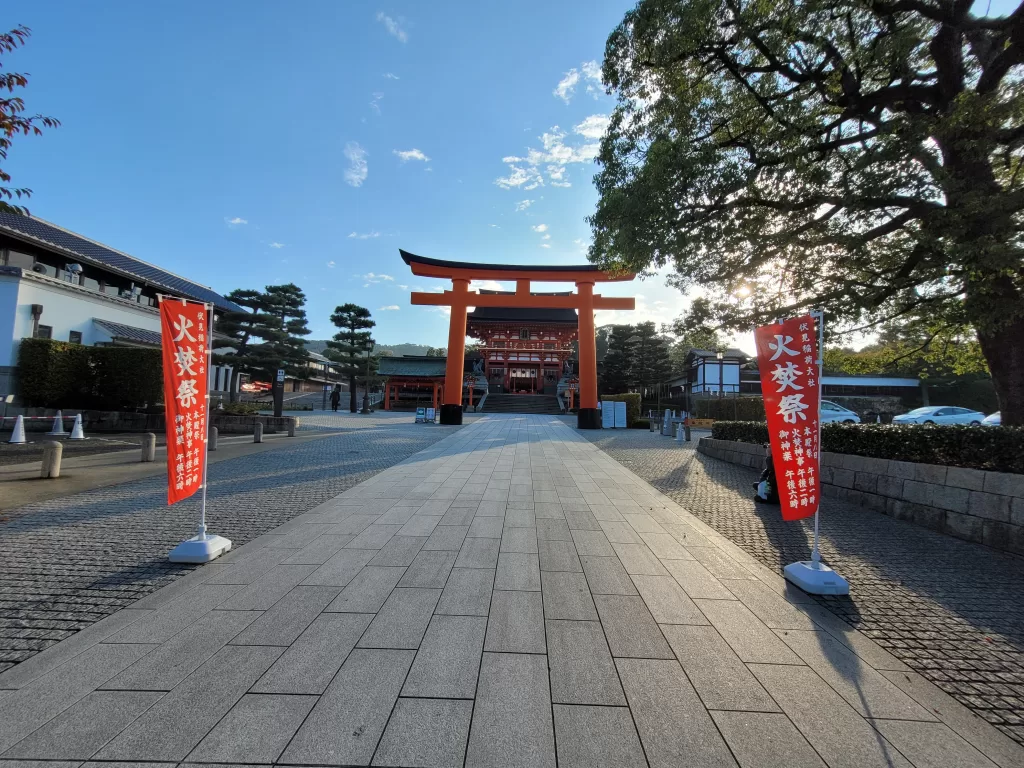
To access the thousands of orange torii gates that Fushimi Inari-Taisha is so popularly known for, you must first enter the shrine’s campus through the main torii gate at the front.
The colours of the gates and temple are orange (or vermilion) to symbolise vigorous protection against evil, having little to do with the colour of foxes as one might have thought.
The Fox Statues
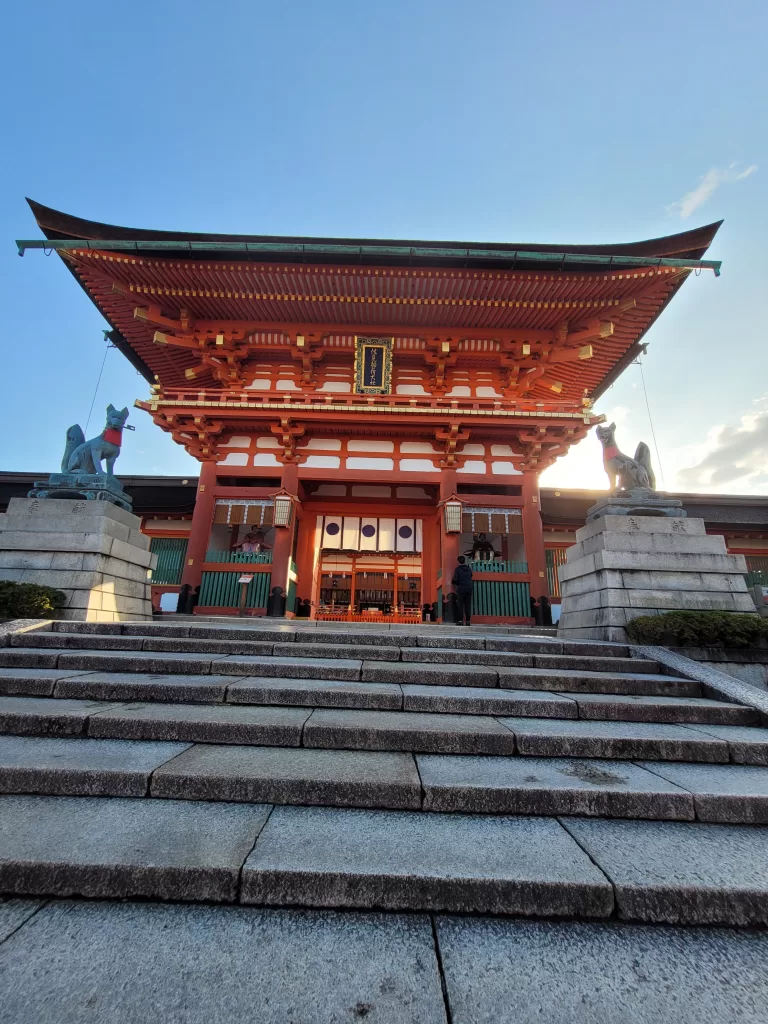
The main shrine is the first thing you’ll see when you enter the big torii gates at the front. As you ascend the staircase towards the vermilion building, two fox statues wearing matching bibs can be seen looking your way as though to welcome their visitors to their dwelling.
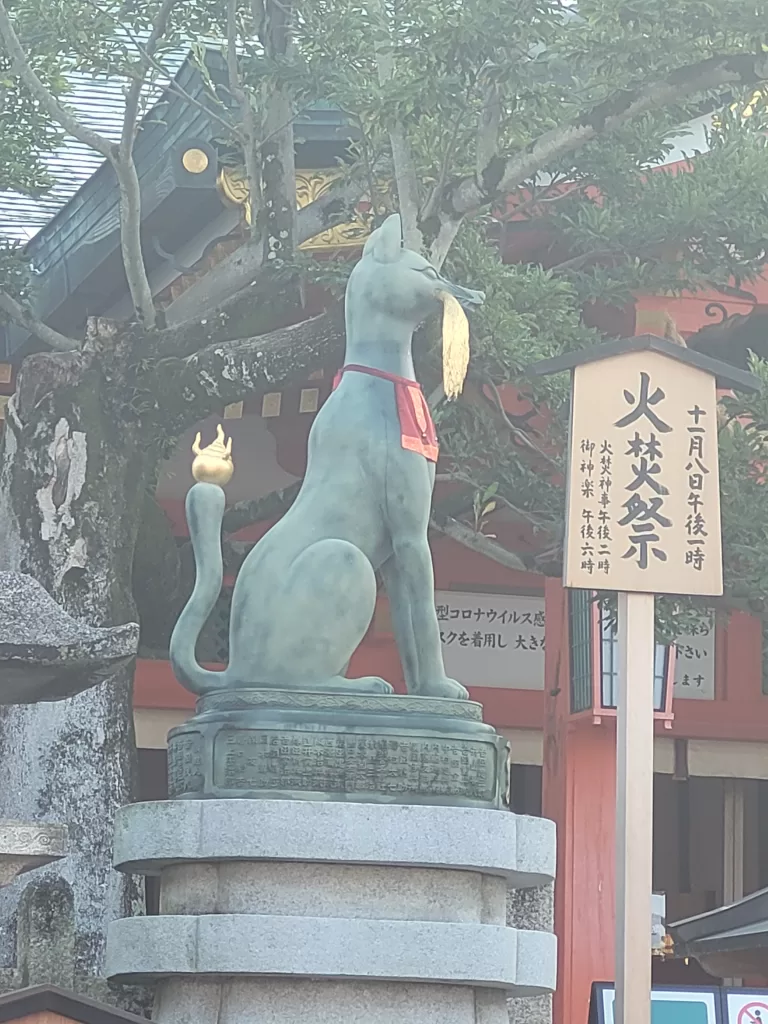
The fox on the right holds a ball in its mouth to symbolise the god of rice, while the fox on the left holds a scroll to symbolise the god’s message. Fox statues of varying designs can be seen near the torii gate entrance and throughout the entire shrine.
The Morning Sun
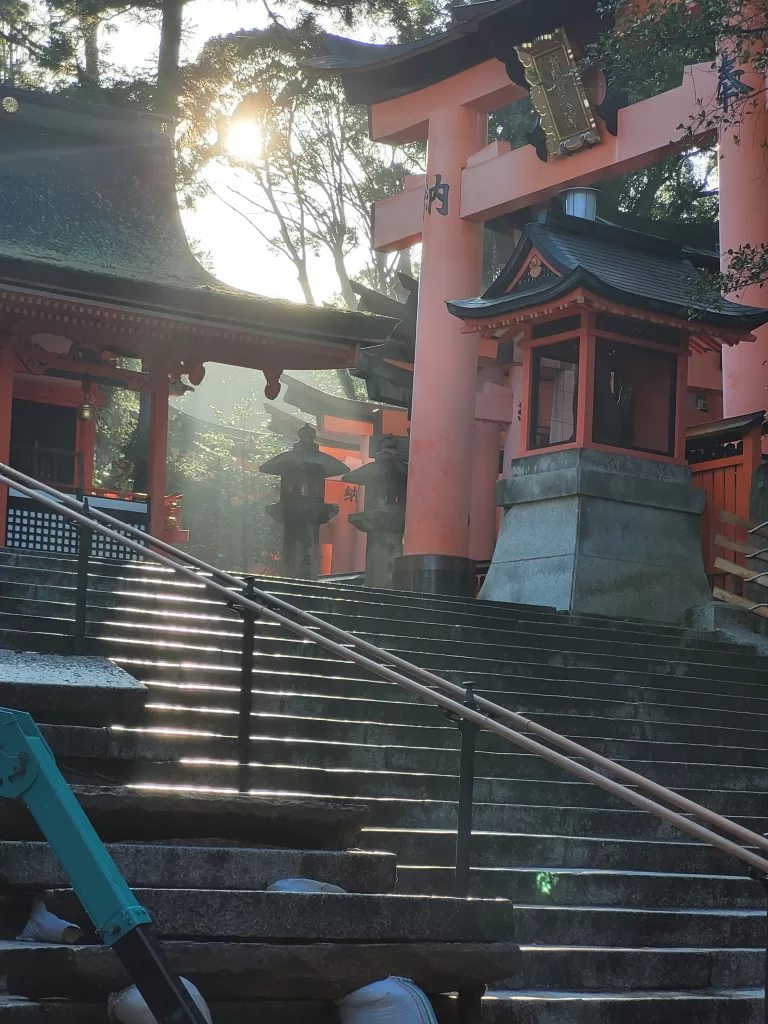
Like many of Kyoto’s main attractions, the Fushimi Inari-Taisha shrine is best experienced in the early hours of the morning for two reasons. Firstly, you can essentially have the place to yourself and take all the photos you want without a parade of tourists getting in the way.
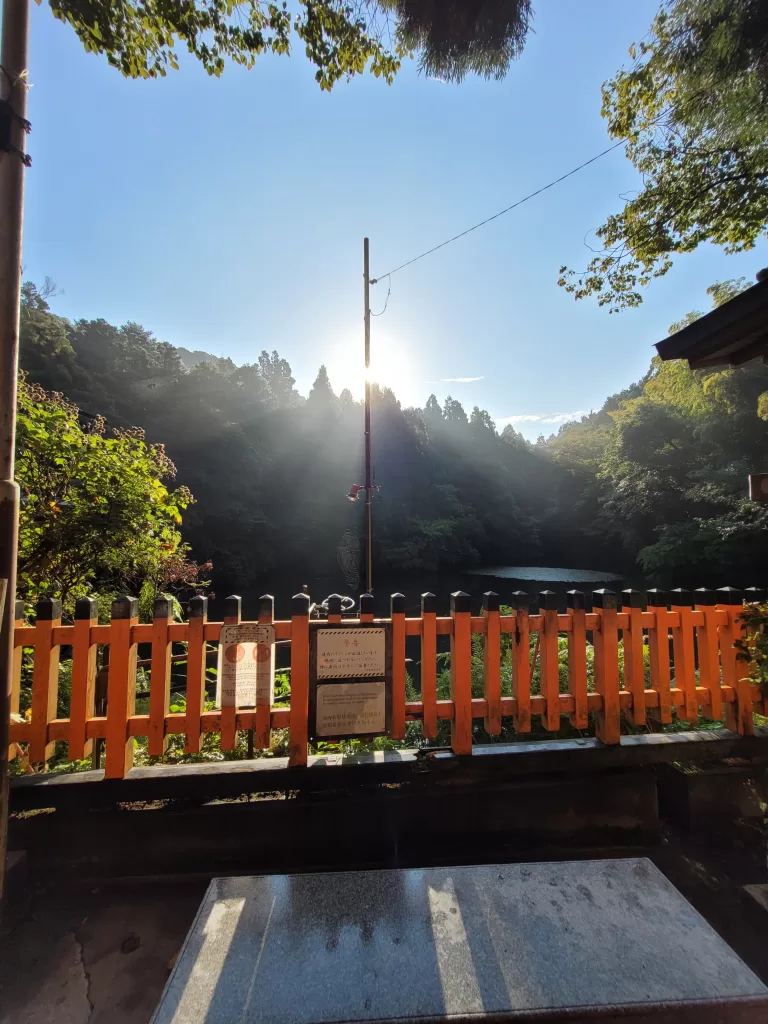
Secondly, the morning sun adds a brilliant touch to the atmosphere of the place as light beams through the surrounding torii gates, temples, and trees in what is known as “komorebi” by the Japanese. On another note, nothing works better than the fresh morning air for keeping you oxygenated as you walk through the trails.
The Senbon Torii
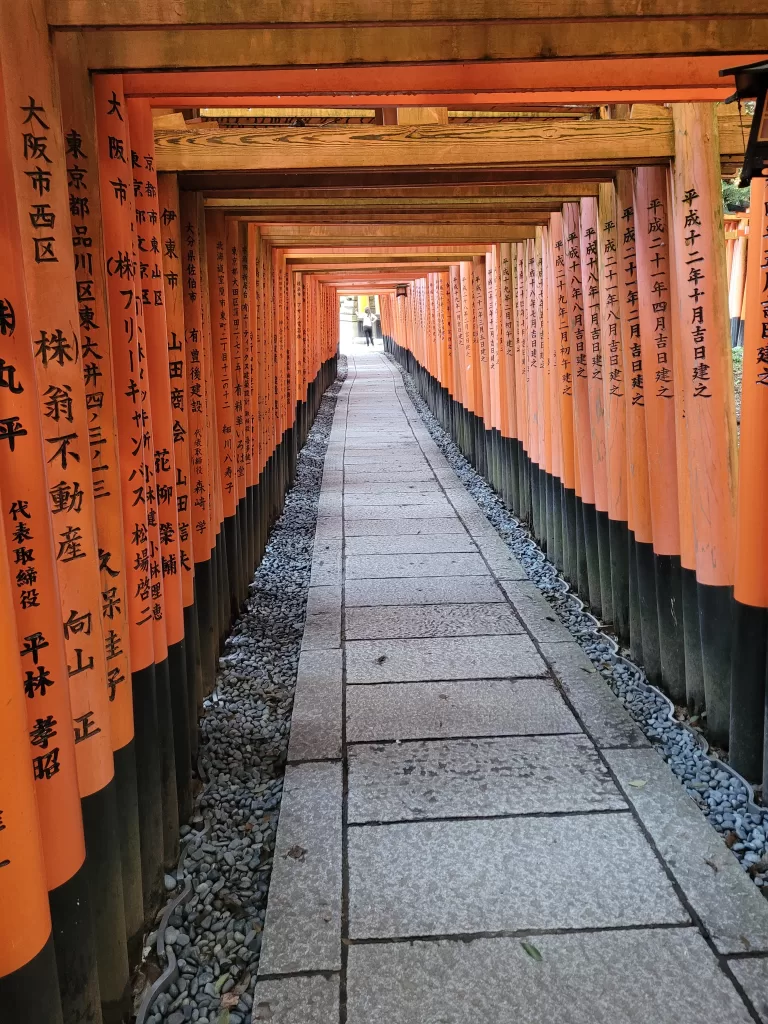
There are literally over 10,000 torii gates at the Fushimi Inari-Taisha shrine, and what’s incredible is their variety in shapes and sizes. Perhaps the most popular of them all is the Senbon Torii (meaning thousand gates) which specifically refers to these smaller-sized torii gates lined up in a compact way to form an intimate tunnel.
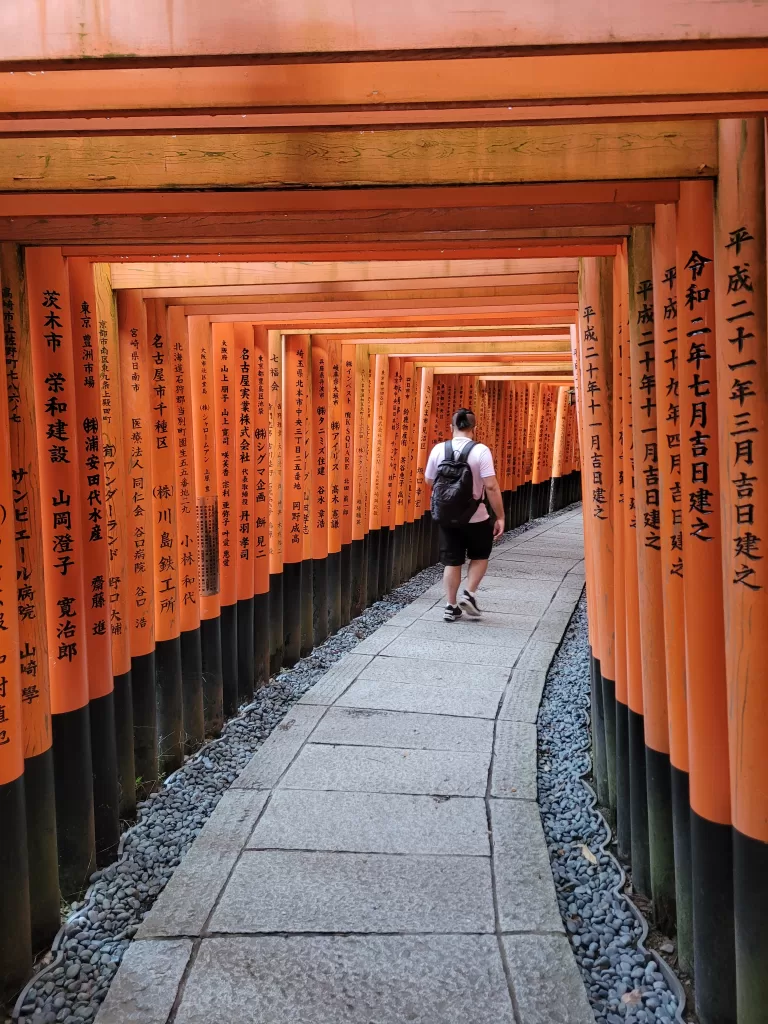
One of the most memorable experiences for holidayers in Japan is walking through the Senbon Torii and taking photos with a loved one. For locals, the endless torii gates make a great walking trail for daily exercise, with some routes taking up to 3 hours to complete!
Of course, if you are planning to visit Japan, you’ll need a way to get around the country as efficiently and affordably as possible. Japan Rail provides an abundance of travel passes to suit your travel needs. So whether you are travelling individually or as a group, the JR Pass is every traveller’s go-to for getting around and making the most of your time in Japan!

